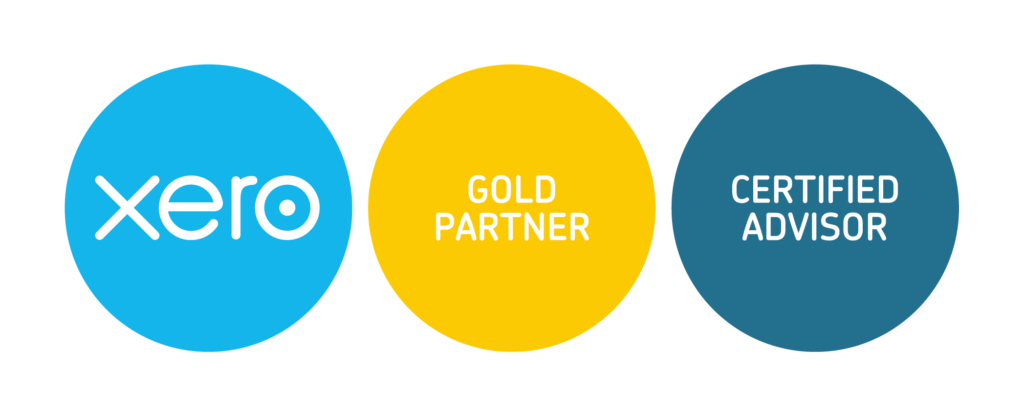CFO GROUP INTEGRATED SERVICES
How User Experience Affects SEO in 2024: The Ultimate Guide
CMO Media Lab Pte Ltd • July 5, 2024
Key Takeaways
- Effective SEO is not just about keywords and backlinks; it also involves optimizing the user experience (UX).
- Improving Google's Core Web Vitals metrics helps boost SEO by aligning the site with Google's performance standards.
- With Google's mobile-first indexing, a mobile-responsive site enhances user experience and complements SEO efforts.
- Enhancements such as optimizing image sizes, minimizing third-party scripts, and responsive design speed up the website and improve its stability and interactivity.
- Continuous testing and updates are vital for maintaining an optimal user experience and SEO performance, helping websites adapt to user needs and search engine algorithms.
Understanding Search Engine Optimization (SEO) and User Experience (UX)
User Experience (UX) refers to a user’s overall experience when interacting with a website or application. This encompasses various aspects such as ease of navigation, page load speed, mobile responsiveness, and the overall design and layout of the site.
High-quality content, intuitive design, and fast-loading pages are all critical components of a strong UX, contributing to higher user satisfaction and increased likelihood of return visits. Delivering a positive user experience is essential for better SEO performance. Using tools like Google Search Console to monitor website performance and improve visibility is also essential.
Search Engine Optimization (SEO), on the other hand, involves optimizing a website to improve its visibility and ranking on search engine results pages (SERPs).
SEO strategies include keyword research and integration, on-page optimization, backlink building, content creation to attract organic traffic, and understanding user intent.
Technical SEO, which focuses on a website’s backend elements, such as site speed, indexing, and security, is also crucial for achieving high rankings. SEO and UX are closely intertwined because search engines like Google prioritize websites that provide a good user experience.
Factors such as page load speed, mobile friendliness, and transparent site structure are essential for both UX and SEO. Optimizing one often benefits the other, leading to better search engine rankings and a more successful online presence.
Core Web Vitals and Page Load Speed

Understanding Core Web Vitals and Their Impact on SEO
Core Web Vitals are critical metrics established by Google to assess the quality of user experiences on a website. They encompass the Largest Contentful Paint (LCP), the First Input Delay (FID), and the Cumulative Layout Shift (CLS). These elements significantly influence user perceptions and satisfaction by measuring loading times, interaction readiness, and the visual stability of content.
To enhance these metrics, focus on technical SEO and web development strategies such as optimizing image sizes, reducing reliance on third-party scripts, and implementing responsive design. These improvements accelerate page loading and ensure smoother interactions and visual stability, which are crucial for maintaining user engagement.

Optimizing Page Load Speed for Enhanced UX and SEO
Page load speed plays a pivotal role in user experience (UX) and search engine optimization (SEO). Speeding up your website not only enhances the user's experience but also contributes significantly to its SEO. Fast-loading sites effectively hold user attention, reducing bounce rates and increasing engagement, which are critical metrics for SEO success.
To improve your website's load speed, focus on compressing images, which reduces their file size without compromising quality. Additionally, leveraging browser caching stores frequently accessed data in the user’s browser, decreasing load times for repeat visitors. Minimizing the use of heavy JavaScript can also lead to significant improvements in page load times.
With these changes, you can ensure that your site attracts visitors and keeps them engaged, leading to higher conversion rates and enhanced SEO performance.
Mobile-First Indexing and Mobile Usability
The Importance of Mobile-First Indexing for Search Engines
With most internet traffic now coming from mobile devices, Google has shifted to mobile-first indexing. This means that the mobile version of your site is considered the primary version for ranking purposes.
Ensuring your site uses a mobile-first design is crucial for maintaining and improving your search engine rankings.
dditionally, local SEO strategies can significantly enhance visibility for mobile-first indexing by targeting local audiences and optimizing local search results.
Optimizing for Mobile Usability and Search Engine Crawlers
To optimize for mobile usability, ensure your site has a responsive design that adapts to different screen sizes. Mobile Optimization for SEO and SEM with the increase in the use of mobile devices, mobile optimization is now a necessity for SEO and SEM.
Simplify navigation, use readable font sizes, and ensure buttons and links are easily tappable. Additionally, optimize your site for search engine crawlers by using structured data, which helps search engines understand your content better and rank it appropriately.
Mobile Usability Tips: Improving mobile usability involves adopting AMP (Accelerated Mobile Pages) to ensure faster loading times on mobile devices. Embrace mobile-first design principles, which prioritize mobile users' needs.
Tools like Google's Mobile-Friendly Test can help identify issues affecting mobile usability.
Ensuring responsive design, optimizing images, and simplifying navigation can improve the user experience on mobile devices, leading to better engagement and higher rankings.
Master These UX Elements to Enhance Your SEO Efforts

Google Core Web Vitals
Google Core Web Vitals highlight the necessity of fast-loading web pages. These vital metrics evaluate your website's loading speed, interactivity, and visual stability. Specifically, the three key metrics are:
- Largest Contentful Paint (LCP): Measures loading performance, ideally within 2.5 seconds.
- First Input Delay (FID): Gauges interactivity, aiming for less than 100 milliseconds.
- Cumulative Layout Shift (CLS): Assesses visual stability with a target of less than 0.1.

Responsive Design
Responsive design is crucial for providing a seamless user interface and user experience across all devices, including phones, tablets, and desktops. First impressions are heavily influenced by design.
If a website isn’t adaptable, users may become frustrated and leave. Ensuring your website is fully functional and responsive on all devices is essential to keeping users engaged.

Ease of Navigation
Simplifying navigation is key to enhancing user experience and SEO. Here are some tips:
- Keep it simple: Overcomplicated menus can confuse users and negatively impact SEO. Simple navigation menus are more user-friendly and effective for search engines.
- Use clear and descriptive labels: Creative labels may not enhance user experience. Clear labels provide better navigation.
- Implement a search bar: A search bar helps users find what they need quickly, improving overall usability.
- Use breadcrumbs: Breadcrumbs help users track their location on the site, making navigation more accessible and more enjoyable.

Quality Content
High-quality content is critical for engaging users and improving SEO. Your content strategy should ensure that your content addresses diverse search queries by providing valuable and relevant content to satisfy user intent. Here are some steps to achieve this:
- Conduct keyword research
- Write engaging headlines
- Create valuable and relevant content
- Optimize your content
- Monitor your content performance

Visual Appeal
While visual appeal doesn’t directly impact SEO, it affects user engagement, which can influence search rankings. A clean layout with engaging colours and images enhances the user experience. Consistent branding, cohesive colour schemes, and high-quality imagery contribute to a memorable and attractive website.
By integrating these key UX elements into your website, you can improve user satisfaction and boost your search engine rankings, driving more organic traffic to your site.
Track These UX and SEO Metrics to Elevate Your Website Performance

Time on Page and Pages per Session: Understanding User Engagement
Tracking user engagement metrics such as time on page and pages per session provides insights into user behavior and how engaged users are with your content. High engagement rates indicate that users find your content valuable, which can positively impact your SEO rankings. Focus on creating high-quality, engaging content that keeps users interested and encourages them to explore more pages on your site.

Bounce Rate and Click-Through Rate (CTR) from Search Results: Measuring SEO Success
Bounce rate and click-through rate (CTR) are critical metrics for assessing the effectiveness of your SEO strategy and user interaction. A high bounce rate may indicate that your site is not meeting user expectations, while a high CTR suggests that your meta tags, including meta descriptions and titles, are compelling enough to attract clicks.
Additionally, monitoring dwell time can provide insights into how engaging your content is. Optimize these elements to improve user satisfaction and search engine performance.

Conversion Rate and SEO Metrics: Tracking the Impact of UX on SEO
Conversion rate is another important metric that reflects the success of your UX and SEO efforts. By tracking how users interact with your site, such as clicks and dwell time, and how many visitors take desired actions like making a purchase or filling out a form, you can gauge the effectiveness of your UX design. Higher conversion rates often correlate with better user experiences, boosting your SEO rankings.
Maximize Your Online Presence: Proven SEO Tactics for Enhanced Visibility
Leveraging Strong SEO Strategies for Improved Search Engine Visibility
To enhance your search engine visibility, implement robust SEO strategies such as keyword optimization, high-quality content creation, and link building. Using relevant keywords that align with search intent is crucial for increased search engine visibility.
These strategies help improve your site’s relevance and authority, making it more likely to rank higher in search results. Crafting content that speaks directly to your target audience ensures your site resonates with the right people.
Combining these tactics with excellent UX ensures visitors find your site, stay, and engage with your content. Incorporating technical SEO expertise into your website design can enhance user engagement and improve search engine rankings.
The Benefits of Search Engine Marketing (SEM) for Enhanced Visibility
Search Engine Marketing (SEM) can complement your SEO efforts by driving targeted traffic to your site through paid search ads. SEM helps increase your visibility on search engines, attracting potential customers actively searching for products or services like yours.
By utilizing SEM, you can target specific demographics and keywords, ensuring your ads appear to the most relevant audience. This targeted approach boosts your visibility and enhances the likelihood of conversions.
When combined with a strong UX, SEM can lead to higher conversion rates and better overall performance. Effective SEM campaigns are monitored and optimized to ensure maximum ROI, helping your business stay competitive in the digital marketplace.
By integrating both SEO and SEM strategies, you create a comprehensive approach to digital marketing that maximizes your online presence, engages your audience, and drives growth.
Essential Testing and Updates for Optimal UX and SEO to Boost Your Website
The Importance of Regular Testing and Updates for SEO Success
Regular testing and updates are essential for maintaining a high-performing website. Conduct A/B testing to determine which design elements and content strategies work best for your audience. Regularly update your site to fix issues, improve performance, and keep content fresh.
This ongoing optimization helps ensure your site remains competitive in search engine rankings. Additionally, incorporating voice search optimization is crucial for staying ahead of SEO trends, as seen with Domino’s Pizza’s early adoption, which led to increased sales and a competitive advantage.
Staying Ahead of Google’s Updates and Algorithm Changes
Staying ahead of Google's updates and algorithm changes is crucial for maintaining your SEO rankings. Monitor industry news and updates from Google to understand how changes might impact your site.
By staying informed and proactively adjusting your SEO and UX strategies, you can continue to provide a top-notch user experience and maintain strong search engine performance.
Transform Your Website’s Performance: Master UX and SEO with CMO Media Lab
To fully leverage the benefits of UX and SEO, it’s essential to develop a comprehensive strategy that integrates both elements seamlessly. Partnering with UX professionals and a professional UI/UX design agency like CMO Media Lab can help you create a user-friendly website that ranks well in search engine results.
CMO Media Lab stays on top of SEO trends and offers a range of services, including organic SEO, local SEO, Google PPC, and website design and development, to ensure your site is optimized.
Conclusion
In conclusion, the relationship between UX and SEO is more important than ever in 2024. Focusing on user experience can significantly enhance your search engine rankings and drive more organic traffic to your site. An expert agency integrates SEO and UX components, focusing on search algorithms to deliver optimal results.
Prioritizing an enhanced user experience is essential. Google evaluates websites based on several factors, such as high-quality content, keyword usage, optimized images, readability, straightforward navigation, quick page loading times, low bounce rates, and improved mobile adaptability.
Consider exploring services from CMO Media Lab, a leading digital marketing agency that provides comprehensive solutions to boost your website’s performance.
Enhance Your SEO with Superior UX
Don't let any more website visitors slip away! Leverage our expert SEO and UX services to connect with your audience and boost your sales effectively. Maximize conversions with our top-notch UX design solutions. Schedule a call with us today and begin expanding your business!
Frequently Asked Questions
Can UX Design Impact the Accessibility of a Website?
Good UX design enhances a website’s accessibility, ensuring that content is usable for everyone, including those with disabilities. By making a website accessible, you comply with legal standards, expand your market reach, and improve your site's SEO.
Search engines favour websites that provide a good user experience to a broad audience, reflecting improved search rankings.
How Can Emotional Design in UX Influence SEO?
Emotional design in UX aims to create a positive connection with the user, eliciting favourable emotional responses that can lead to increased engagement and loyalty. Websites that successfully establish such emotional connections tend to see higher interaction rates, such as more extended visits and more frequent returns.
These behaviours indicate to search engines that the website provides a valuable experience, potentially leading to better SEO outcomes.
How Can Emotional Design in UX Influence SEO?
Enhancing UX through structured content and schema markup can make a website more likely to be featured in rich snippets, which appear at the top of search results. These snippets provide quick answers and draw significant user attention, leading to higher click-through rates.
By organizing content clearly and using schema markup for easy interpretation by search engines, websites can improve their chances of securing these coveted positions, boosting visibility and SEO performance.










